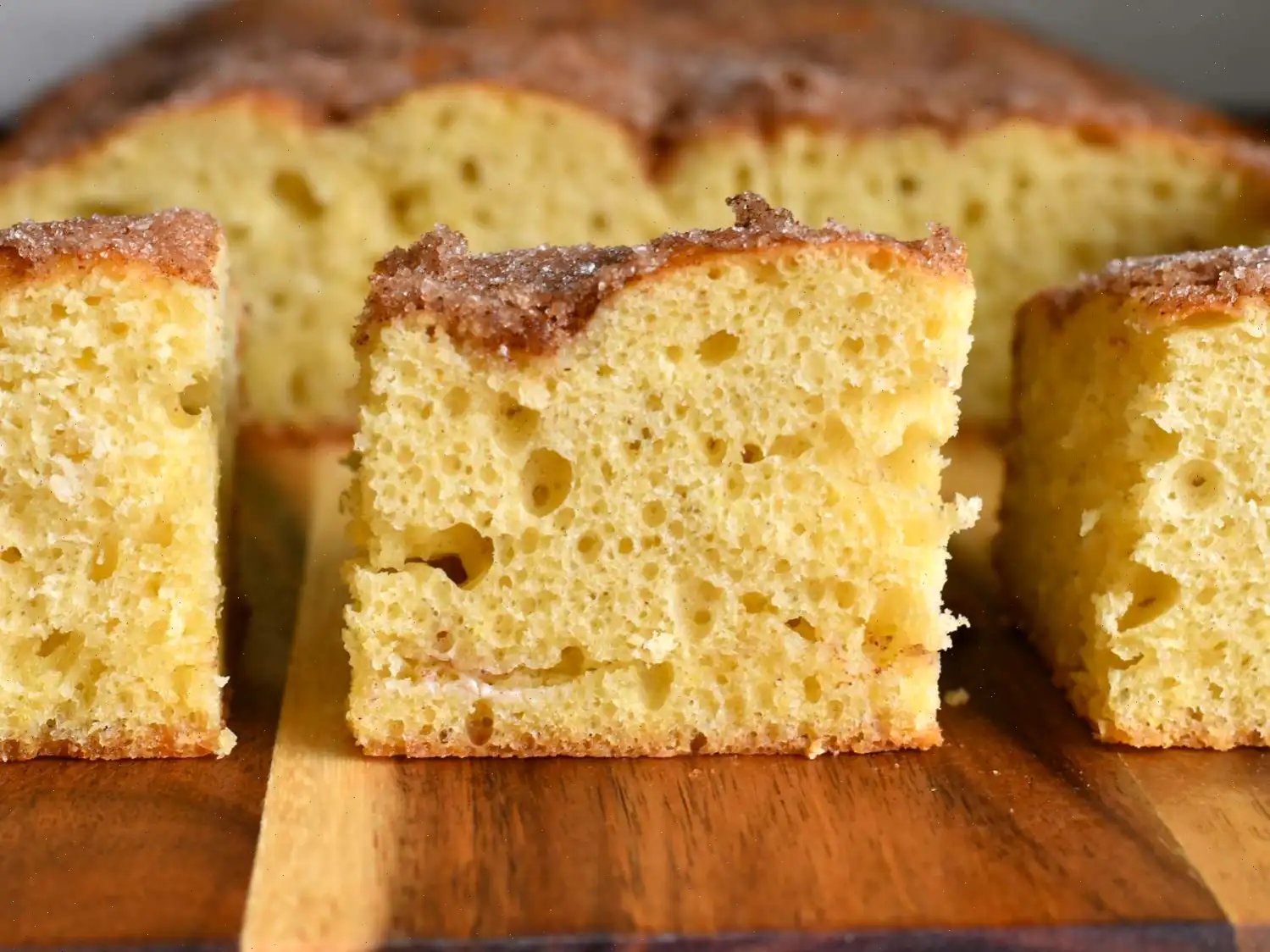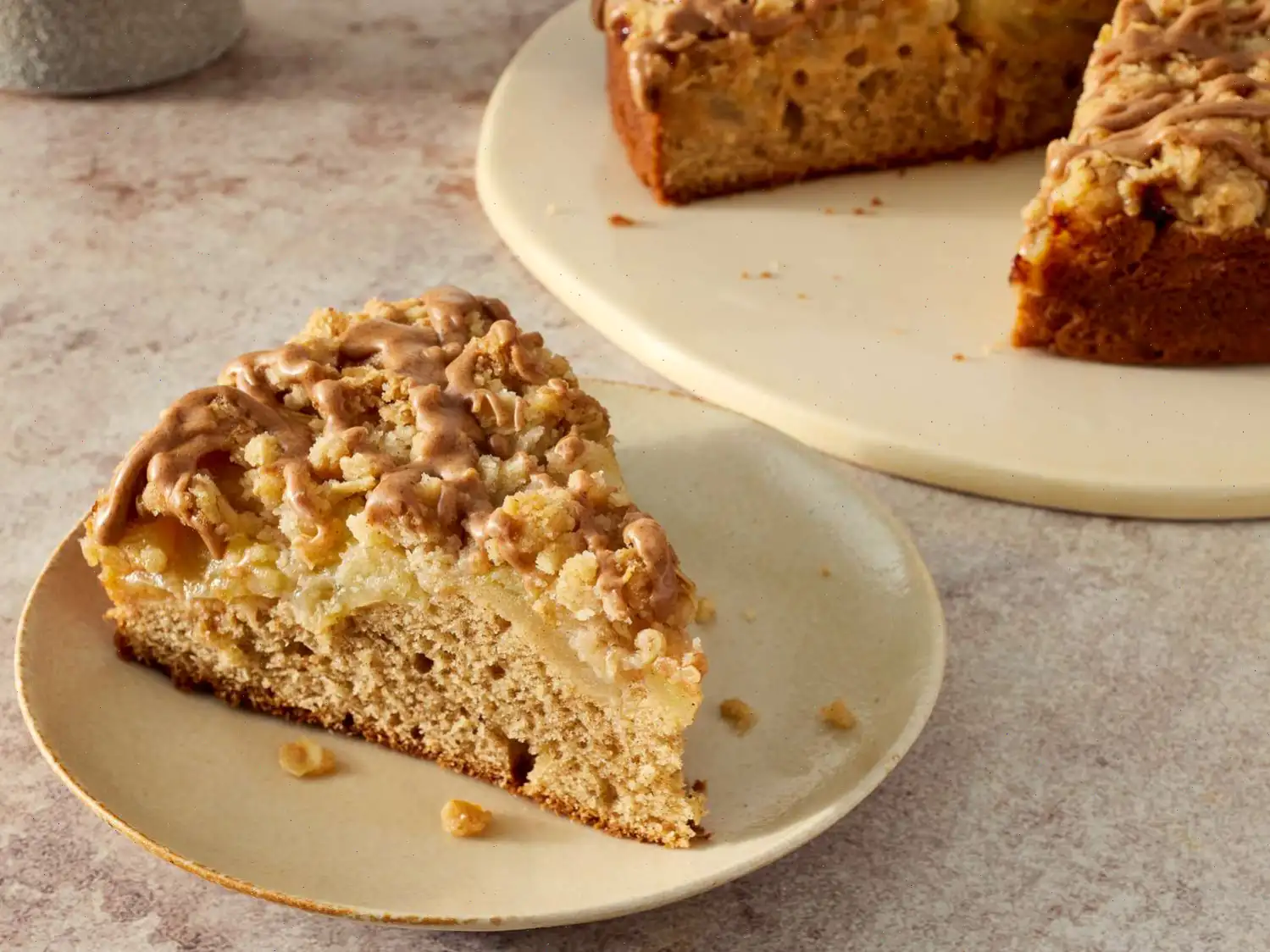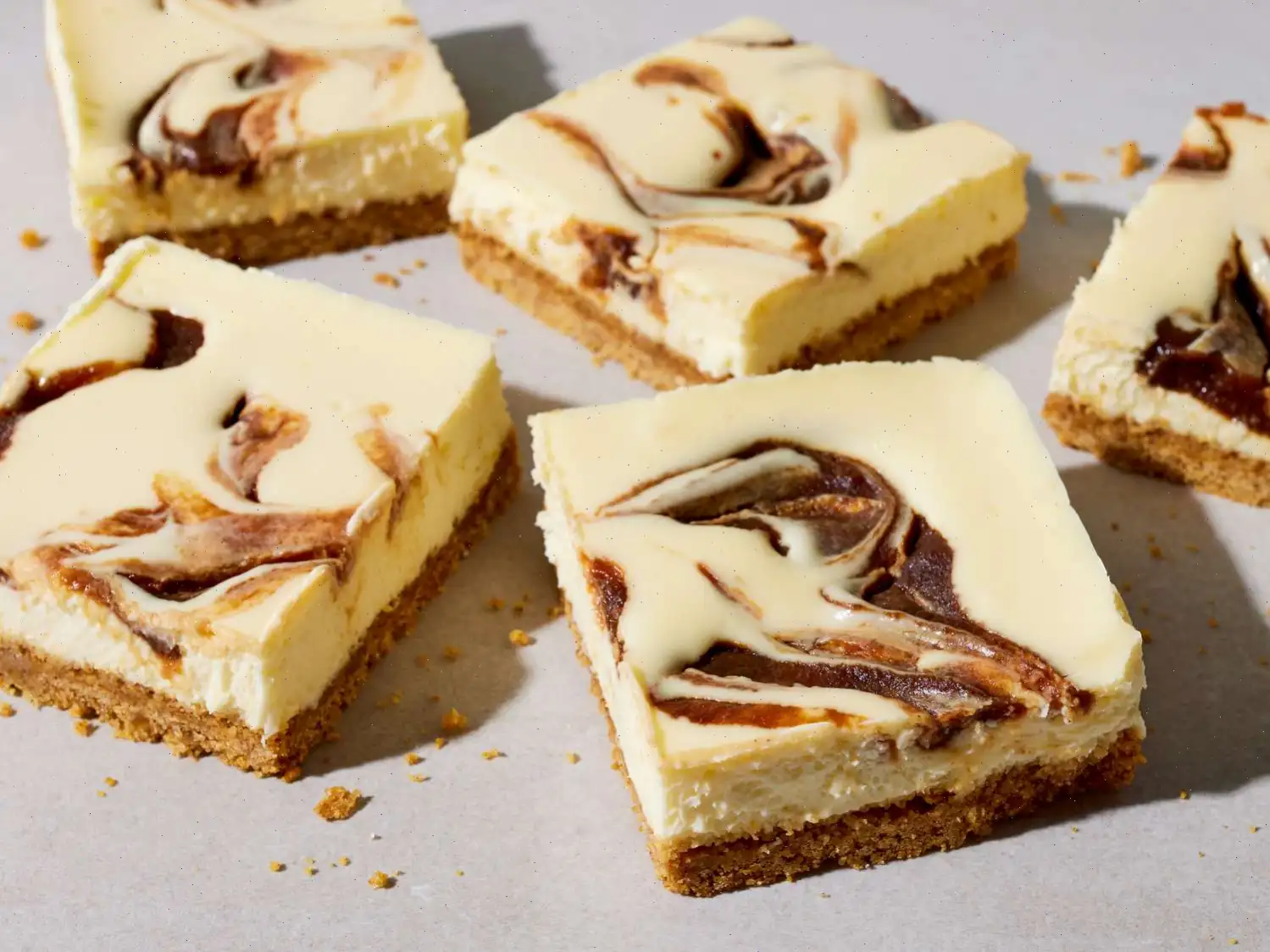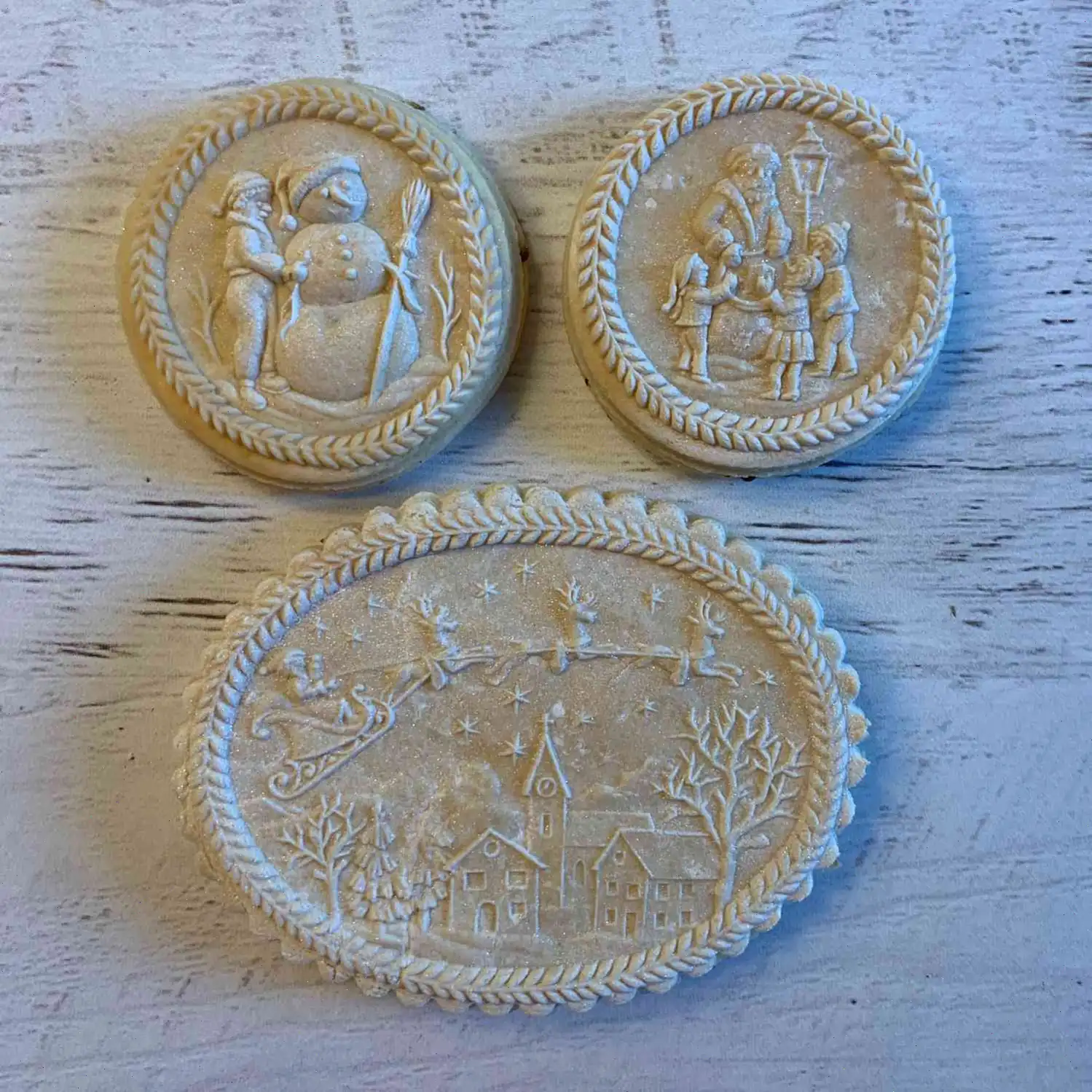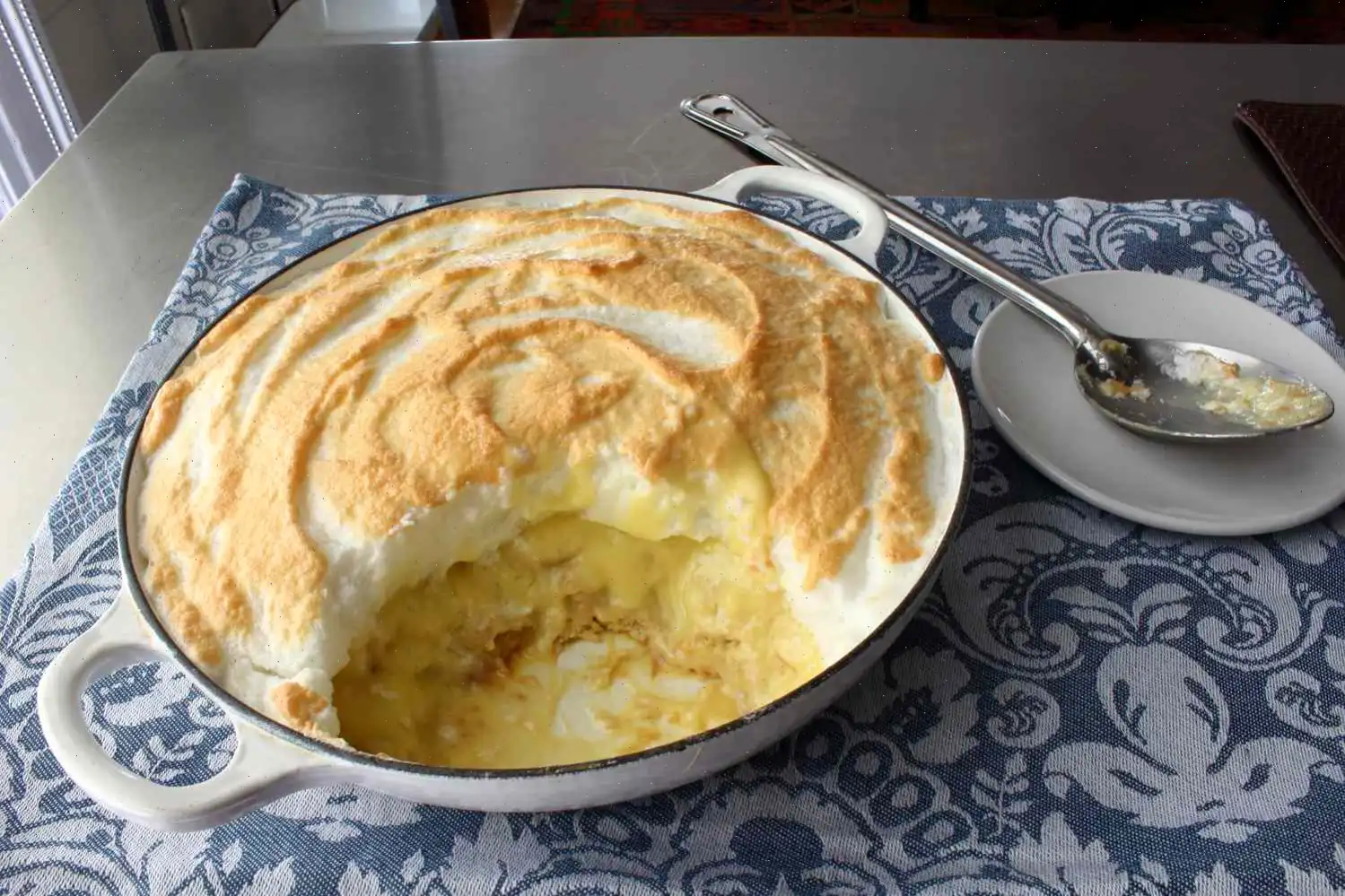
Butterkuchen Recipe
Ingredients
- 2 (.25 ounce) packages dry yeast
- cup warm water
- cup milk
- cup white sugar
- 1 teaspoon salt
- cup butter
- 4 cups all-purpose flour
- 3 eggs
- 1 cup white sugar
- teaspoon ground cinnamon
Directions
Step 1: Butter a 9x13 inch pan and set it aside.
Step 2: In a small mixing bowl, dissolve the yeast in warm water. Let it stand for about 10 minutes until it becomes creamy.
Step 3: In a saucepan, combine the milk, cup sugar, salt, and cup butter. Heat over medium heat until the sugar dissolves and the butter melts. Remove from heat and let it cool to lukewarm.
Step 4: Add the dissolved yeast mixture to the cooled milk-butter mixture and set it aside.
Step 5: In a large bowl, combine the flour, eggs, and the yeast mixture. Stir everything together until smooth and well-blended.
Step 6: Pour the dough into the prepared 9x13 inch pan, spreading it evenly. Cover the pan and let the dough rise in a warm place for 45 minutes.
Step 7: While the dough is rising, preheat the oven to 375F (190C).
Step 8: In a small bowl, mix together the cup of butter, 1 cup of sugar, and teaspoon of ground cinnamon.
Step 9: After the dough has risen, sprinkle the cinnamon-sugar mixture evenly over the dough.
Step 10: Bake the rolls in the preheated oven for 30 minutes, or until the top is golden brown and syrupy.
Nutrition Facts
Serving Size: 1 Roll
| Nutrient | Amount | % Daily Value |
|---|---|---|
| Calories | 207 | - |
| Total Fat | 9g | 11% |
| Saturated Fat | 5g | 26% |
| Cholesterol | 44mg | 15% |
| Sodium | 164mg | 7% |
| Total Carbohydrate | 29g | 11% |
| Dietary Fiber | 1g | 3% |
| Total Sugars | 13g | - |
| Protein | 4g | 7% |
| Calcium | 19mg | 1% |
| Iron | 1mg | 7% |
| Potassium | 56mg | 1% |
Butterkuchen is a rich, yeasted coffee cake hailing from Germany, known for its buttery texture and a topping of cinnamon sugar that makes every bite indulgently delicious. Its name literally translates to "butter cake" in German, highlighting the key ingredient that makes this dessert so irresistible.
History of Butterkuchen
The origins of Butterkuchen date back to the 19th century in Germany. It was a common treat in many German households, often baked for special occasions, family gatherings, or simply to accompany coffee in the afternoon. While variations of Butterkuchen exist across different regions of Germany, the general concept remains the same: a soft, yeasted dough topped with melted butter, sugar, and sometimes a sprinkle of cinnamon.
Regional Variations
Although Butterkuchen is enjoyed across Germany, it is especially popular in the northern and central regions. In these areas, it is often found in bakeries and enjoyed during the winter months when people gather for social occasions. The cakes texture and sweetness make it a great companion to a warm beverage, which is why it is commonly served with coffee or tea. In some regions, Butterkuchen is also known to be topped with almonds, which add a delightful crunch and flavor contrast to the soft, buttery dough.
Differences from Similar Dishes
At first glance, Butterkuchen may seem similar to other yeasted cakes like cinnamon rolls or coffee cakes. However, the main difference lies in its simplicity and focus on the rich butter topping. Unlike cinnamon rolls, which are rolled up and filled with cinnamon sugar, Butterkuchen is flat and bakes as a sheet cake, making it quicker to prepare and easier to serve in large portions. Furthermore, while many coffee cakes have more complex flavors with additional fillings and spices, Butterkuchen is much more straightforward with its minimal but decadent ingredients.
Where Butterkuchen Is Typically Served
Butterkuchen is most commonly served as a dessert or snack during coffee breaks in Germany. It is a popular treat in bakeries, often displayed as a large sheet cake from which slices are cut. It can be found at family celebrations, holiday gatherings, or even as a comforting treat for breakfast. Its versatility also makes it a perfect picnic dessert or a light evening snack paired with a hot drink.
Fun Facts About Butterkuchen
- Butterkuchen is often baked in a large sheet pan, making it perfect for serving a crowd.
- The cakes buttery topping is sometimes enhanced with additional flavors like vanilla or lemon zest, depending on the region or personal preference.
- Despite its simple ingredients, Butterkuchen is highly regarded for its irresistible combination of textures the soft dough contrasts beautifully with the slightly crunchy sugar topping.
- In some parts of Germany, its traditional to add a sprinkle of flaked almonds on top before baking, giving it a delightful crunch and nutty flavor.
Conclusion
Butterkuchen is not just a dessert; its a piece of German baking history. Its buttery, sweet flavor and simple yet effective ingredients make it a favorite for many. Whether you're enjoying a slice with your morning coffee or serving it at a gathering, Butterkuchen brings a taste of Germanys culinary tradition to any occasion. Its regional variations and rich history make it a delightful cake to explore and enjoy.
FAQ about Butterkuchen Recipe
Comments
Karen Phillips
03/25/2023 10:55:56 AM
This recipe has a lot of potential, but the instructions are poorly organized, leading to some issues during preparation. For instance, if you let the yeast sit for 10 minutes as instructed, but the saucepan ingredients take longer to cool down, the yeast mixture ends up sitting for much longer than recommended. Additionally, the pan provided in the recipe is too small, causing the mixture to overflow and smoke due to the high sugar content. The oven temperature is also too high, resulting in the bread being done too quickly while the topping fails to get syrupy. Despite these setbacks, the outcome was delicious! The breakfast rolls turned out light, fluffy, buttery, with a hint of cinnamon. To improve the recipe, I suggest heating the milk and sugar mixture first, then adding the yeast when the milk reaches 125 degrees. Adjust the oven temperature to 350, use a larger pan, increase the amount of cinnamon, and consider adding some vanilla to the dough. I would definitely make this recipe again, as the end result is simply fantastic!
Jonathan Scott
03/25/2023 07:39:36 AM
This cake recipe brought back nostalgic memories of my grandma's coffee cake. The aroma of butter and sugar filling the house was simply delightful. I followed her tradition of poking holes in the top, adding bits of butter, and sprinkling cinnamon sugar on top. While my version rose more than hers and the dough was slightly less sweet, the end result was still incredibly delicious!
Matthew Moore
03/18/2024 02:53:34 PM
I prepared this dish on 2/22/16 for my daughter's girl scout troop's World Thinking Day event. The theme was to bring foods from different countries, and since we have German ancestry, we chose this dish. It received numerous compliments from both the girls and the adults!


